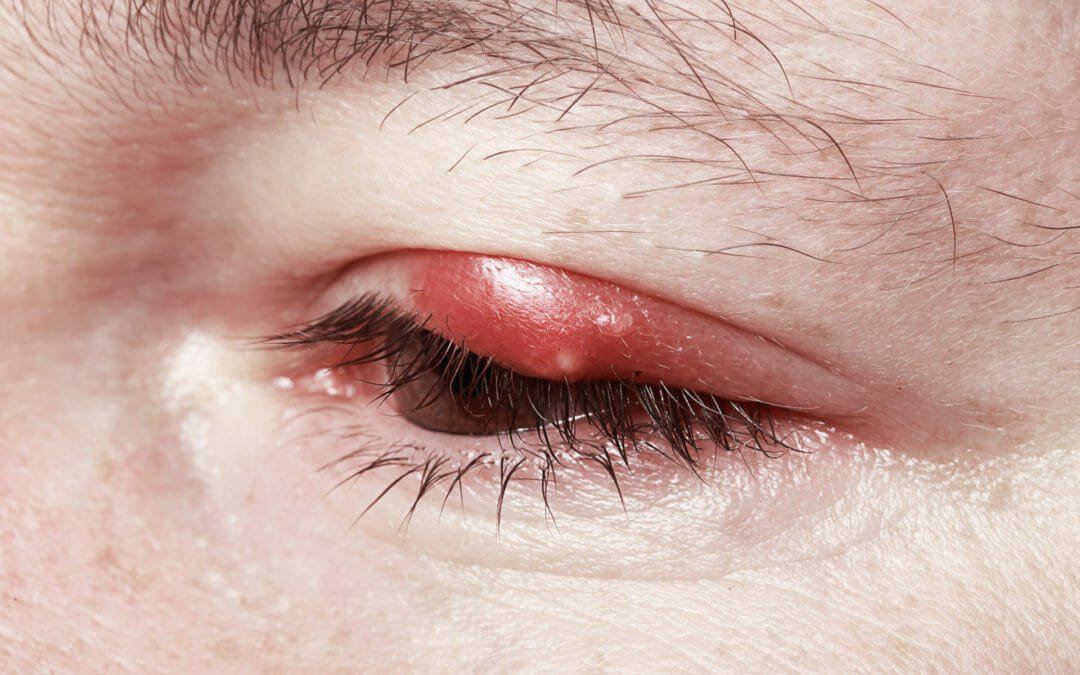Is stye contagious?
Styes are painless red bumps which appear on upper or lower eyelids near eyelashes. Even painful, spikes are surprisingly harmless immune responses to infection.
Overview: Eye Styes, Causes & Symptoms
Styes occur externally on the base and internally in a small gland (meibomian glands) on the eyelid.
Styes can usually arise due to bacteria. The Staphylococcus rex virus, which is found inside the nose, is one of the commonest causes. If you touch your face, it will go through the nose and then goes through the eye. This infection blocks meibomian gland drainage and makes swollen glands.
What is a stye?
A stye is a painful red bump, tender red bump that develops along the edge of the eyelid when bacteria infect an eyelash follicle or oil gland within the lid.
A stye is a bacterial infection involving one or more of the small glands near the base of your eyelashes. It is similar to a boil or a pimple and is often painful.
What are the signs and symptoms of a stye?
- A red lump on your eyelid that is similar to a boil or a pimple.
- Eyelid pain.
- Eyelid swelling.
- Tearing.
Should I go to work or send my child to school with a stye? Stye contagious?
The stye is not infectious at all. You can get home from work and send the student out to school.
What Causes a Stye? Stye contagious
The streak forms when the underlying hair or oil gland in eyelashes is obstructed. Although uncomfortable and unsightly, stiches are commonly and rarely bothering. Researchers are still trying to determine what causes this syndrome, but it is known for its prevalence: Some people develop the disease differently from some people. Among other risks of having styes, some conditions may also increase the likelihood of styes. It includes
Causes Bacteria — most often a type called staphylococcus — are the root cause of styes. If bacteria infect an oil gland, you get an “internal stye.” When you get an infection on your eyelash follicle, it’s called an “external stye.” A cut or other injury can open the area to bacteria that cause infection. Or you may simply touch or rub your eyes a lot, with hands that carry bacteria. It may happen more during allergy season when your eyes get itchy.
Risk factors- Stye contagious?
You are at increased risk of a stye if you:
- Touch your eyes with unwashed hands
- Insert your contacts without thoroughly disinfecting them or washing your hands first.
- Leave on eye makeup overnight
- Use old or expired cosmetics
- Have blepharitis, a chronic inflammation along the edge of the eyelid
- Have rosacea, a skin condition characterized by facial redness.
- If you wear eye makeup while you have a stye ( this is not recommended ), you can spread that bacteria to other oil glands and eyelash follicles, raising your risk of infecting both eyes or having multiple styes on one eye.
- Symptoms of Stye occur when staphylococci bacteria enter and infects eyes, follicles and glands. Staphs bacteria are typically found in the skin as well as in the nasal cavity but can also cause damage to other organs in other areas.
Are Styes Contagious?
While viral pink eye and some other eye infections are contagious, styes spread so rarely between individuals that the American Academy of Ophthalmology characterizes them as not contagious .
styes are not contagious
Styes contain traces of the same bacteria. As the infection drains and heals, it spreads the germ to the body. During treatment there are some measures that will help to avoid unintentional injury.
Can Eye Styes Spread? Stye contagious?
Styes usually are noncontagious.
It is possible for your child’s teeth to spread bacterial infections. This is why washing the hands and pillow covers regularly can prevent germs from spreading. Unless you clean it or apply a warm compress to it, do not touch it for prevention of bacterial infections or irritation.
Occasionally, swelling may occur between eyelids. There are other ways to spread bacteria in eyes. In a number of instances, these symptoms cause an emergency condition known as cellulitis.
How Long Do Styes Last? Stye contagious.
Stryes are not permanent eye disorders. Most are cleared in two weeks. Using a cold compress could speed up healing and drain swollen eye cells.
How Quickly Does a Stye Go Away? Stye contagious
Some symptoms take 7-14 days to disappear alone or through an on-going treatment.
The infection is a risk factor that ophthalmologists may have to use antibiotics to remove or flush out any bacteria.
Repeated styes are a good indicator that your skin condition is chronic, so you need to talk to a doctor when you are experiencing styes.
How To Get Rid Of Styes (Stye Treatment)
It is possible to relieve stingy symptoms by following a few simple steps.
One popular option mentioned is warm compress. Application of washcloth to skin a few times per day in warm water can help reduce blood sugar but also reduces the risk.
No need to get stuck. If it does so you could have infections on your eyes. A doctor will usually drain the stye if a patient doesn’t clear out the stye in several days. These are typically not eye emergencies, but you need to consult an eye doctor in case.
How will an eye doctor treat a stye?
Contact your doctor if the stye doesn’t start to improve after 48 hours Redness and swelling involves the entire eyelid or extends into your cheek or other parts of your face.
Stye Treatments
Most stages are not dangerous and are treated with minimal to very little care before disappearing entirely. But when a Stye bothers you wish to address them you could do certain things to help it heal.
Your doctor might suggest antibiotics in pill or cream form to help get rid of a stye that won’t go away. In rare cases, your doctor may numb the area and use a needle to drain the fluid. If you get a chalazion because of an internal stye, a steroid shot could help lessen some of the swelling.
Try not to use contact lenses if you already have a stye.
Listen to your doctor about the best way to disinfect and clean contact lenses. Wash your hands thoroughly before you handle them.
Warm compresses
Apply warm compresses. If you’ve had a stye before, using a warm compress regularly may help prevent it from coming back.
Manage blepharitis. If you have blepharitis, follow your doctor’s instructions for caring for your eyes.
Can styes be prevented?
If you notice a bump or pimple on your upper or lower eyelid, it might be a stye.
It’s an infection in the oil glands around the eyelids. You don’t have to worry about spreading a stye to someone else. It isn’t contagious
A stye is a painful red bump that forms on the upper or lower eyelid near the eyelashes. Though painful, a stye is a relatively harmless inflammatory response to a bacterial infection.
- Keep your hands away from your eyes.
- Take care with cosmetics. Reduce your risk of recurrent eye infections by throwing away old cosmetics.
- Don’t share your cosmetics with others.
- Don’t wear eye makeup overnight.
- Make sure your contact lenses are clean.
- If you wear contact lenses, wash your hands thoroughly before handling your contacts and follow your doctor’s advice on disinfecting them.
- While styes can be caused by bacteria infecting an eyelid gland or eyelash follicle, good hygiene usually keeps these at bay.
- Wash your hands thoroughly before you handle them. Show Sources SOURCES: American Academy of Ophthalmology.
Keep your hands clean with simple soap and warm water, or use a hand sanitizer that has alcohol. Avoid touching your eyes . It can be tempting to rub your eyes when they’re itchy, especially during allergy season. Try to resist it and consider allergy medication if it helps with the itch .
Powerful Stye Treatment- TheraLife
References
Are styes contagious? By Autumn Sprabary ; reviewed by Sonia Kelley, OD, MS





